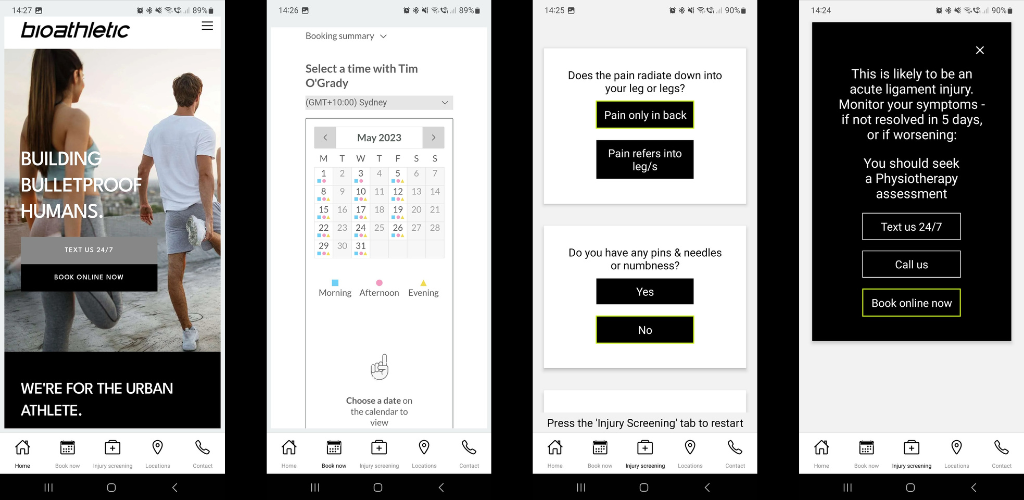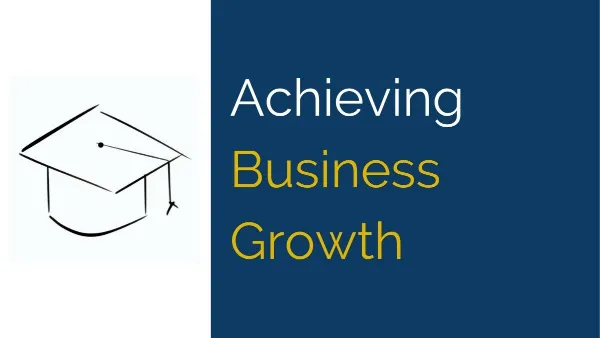Anyone who’s thought about starting a small business has probably heard business growth stats that go something like this:
7 out of every 10 small businesses will fail, or
20% of small businesses fail within the first year
Technically both those stats are true – it’s worth noting though that the 70% failure rate is at 10 years.
The other oversight in those “failures” is that some small business owners may have closed their business because they found another opportunity elsewhere or decided to change focus and set up a new business.
Don’t fear failure, use it effectively
Failure in business isn’t something to be feared. Knowing how to fail effectively is the key!
The concept that failing means that you aren’t successful couldn’t be further from the truth.
As an example, there was a small but growing tech business that developed products like the Newton, the Pippin and the eMate. All of those products failed dismally, despite years of research and development from the best brains in the business.
But that little company that failed often also succeeded occasionally, and their successes far outweighed their failures.
Oh, and the company responsible for the Pippin and Newton ended up with some decent business growth – it’s Apple. You can read more about their product failures here.
Failing fast = stellar business growth
The trick to successfully failing is to do it small, fast and frequently.
You need to plan a test for every idea or offering so that you’ll know in a short period whether you’re on to something.
The worst thing you could do in business is hang on to a service or product that has a small amount of uptake but never moves past break even (ie. it covers its costs but never generates much profit).
Even if it generates a small amount of profit, there’s an opportunity cost of using your resources for small returns while more profitable opportunities are missed.
Ready to be an industry leader?
In the 1990s, having a clinic website showed potential clients that you’re at the leading edge of the industry.
Well, times have changed and it’s become harder to differentiate yourself from other local practices.
Have you thought about an app for your clinic?
An app is more than just a website on a phone. It needs to offer advice, where and when clients need it.
We designed this app, on Android and ios, for a Sydney-based Physiotherapy clinic. It offers on-the-spot injury triage as well as online bookings.
After a rolled ankle, there’s no “give it a week and see” approaches. No Dr Google searches. It’s straight to the app from their Physio.
After answering a few simple questions, the app provides a provisional diagnosis and recommendations. It offers a booking link on the spot and directions to the clinic (or nearest hospital if it’s an emergency).
It’s advice, for clients, from their trusted Physio, when they need it most.

If you can quickly work out what ideas float and which ones sink, you’ll be able to experience business growth at an awesome rate.
Any test that doesn’t get love from (paying) customers is shut down, saving you from wasting time and resources over the longer term.
Other tests show early success, giving you the option of committing more resources to grow the offering and capitalise on a winner.
Consistent and sizeable business growth doesn’t mean finding a new idea regularly. It might be about expanding your successful ideas and growing just a few ideas to a larger scale.
Barriers to successful failing
One of the biggest barriers to failing effectively is coming to terms with the idea that you failed.
Admitting that your idea didn’t work can hurt a little. But think of it as a successful test, one that was well planned and provided the fast answer you needed to achieve business growth.
The other barrier is hope. Hoping that if you give it just a little longer, the hoards will come galloping around the corner and start throwing money at you. Or the hope that the early trickle of customers will gradually and continually build into a flood.
“Hope doesn’t pay the bills”, as some cynical business owners have lamented. Putting hope aside and looking at the brutal numbers are the only way to properly evaluate your test.
Last is ownership of the idea. You came up with an idea that you loved, and you thought your customers would love it too.
Letting go of something that you think is awesome is hard because you can see the value in it. But unless you are your own customer, it just doesn’t matter.
If your customers don’t find the idea or see the value, it’s not going to be a success.
Physiotherapy business failures
There are too many Physio businesses that are carbon copies of each other.
They have an open room with curtained cubicles. They have some gym equipment, maybe a machine or two. They provide injury assessment and treatment, and they “specialise” in necks, shoulders, backs, hips, knees, ankles, elbows….you get the idea.
But why would a potential client choose you over a competitor?
Sure, you’re an awesome Physio, but they’ll never know that until they have a session. And they’ll never have a session because you don’t have a point of difference to attract them in the first place.
That’s why most Physio businesses experience very slow business growth, relying on word of mouth to gradually build over 5-10 years.
So what can you do differently to stand out and build fast. What can you offer that’s innovative and will bring in more than your share of the market?
How to fail (effectively)
Step one is to look at your market, particularly the ones coming in the door right now. It’s easier to sell to your existing customer base than it is to bring in new clients.
Are there any sub-groups within your existing clients that may need a unique offering?
For example, your clients may be 20-50 year olds but there’s a decent concentration of young parents with primary school children. Their needs and available times are completely different from your 20 year old uni students or your 50 year old business person.
Next, look at the resources you already have. That’s your equipment, staff and current offerings.
Is there a gap in your offering that isn’t being addressed? Think about how often your clients ask if you know a good place for yoga classes, or if you know a local dietitian.
Is there a common grouping of services that a client tends to use? Does everyone who needs lower back treatment also get a remedial massage? Could you package those sessions up and offer it as a single product?
Once you’ve decided on your product, decide on your KPI. That’s a metric you’ll use to judge the validity of the idea.
Be very careful when choosing your KPI. It must match the revenue or profitability of the idea, not the interest in the idea.
Looking at total number of sessions, weekly new sessions or revenue generated is good.
Looking at hits on the webpage for your new product or number of enquiries is useless. It’s a “vanity metric” that can look great and make it feel like you’re on the right track, ignoring that fact that your conversions (and bank balance) doesn’t agree.
Lastly, choose your timeframe. It has to be long enough that the idea and marketing can propagate but not so long that you’re wasting your money on it.
There’s no right answer here – some ideas can be tested in just a few weeks, others will need 3-6 months.
The only “wrong” answer is to not have a timeframe. It allows the idea to meander and leads to the hope that the huge customer uptake is going to happen really soon…
Achieving business growth
So the plan is to develop some ideas, test them and kill the ones that don’t make the cut.
That means that every round of testing is evolving your business, not just through finding success but by identifying where success isn’t to be found.
Business growth will come from occasionally finding that idea that wins, and continuing on with it while testing new ideas.
Being scared to venture from the path of the typical Physiotherapy business and trying to avoid failing is a guaranteed way to flat line your business growth or worse, gradually shrinking into the small business abyss.
Risking small failures and trying new things, innovating despite the chance of failing, is the best way to achieve massive business growth.
It’s hard work and can be an emotional rollercoaster at times, but the reward is worth the effort.
Happy failings!



